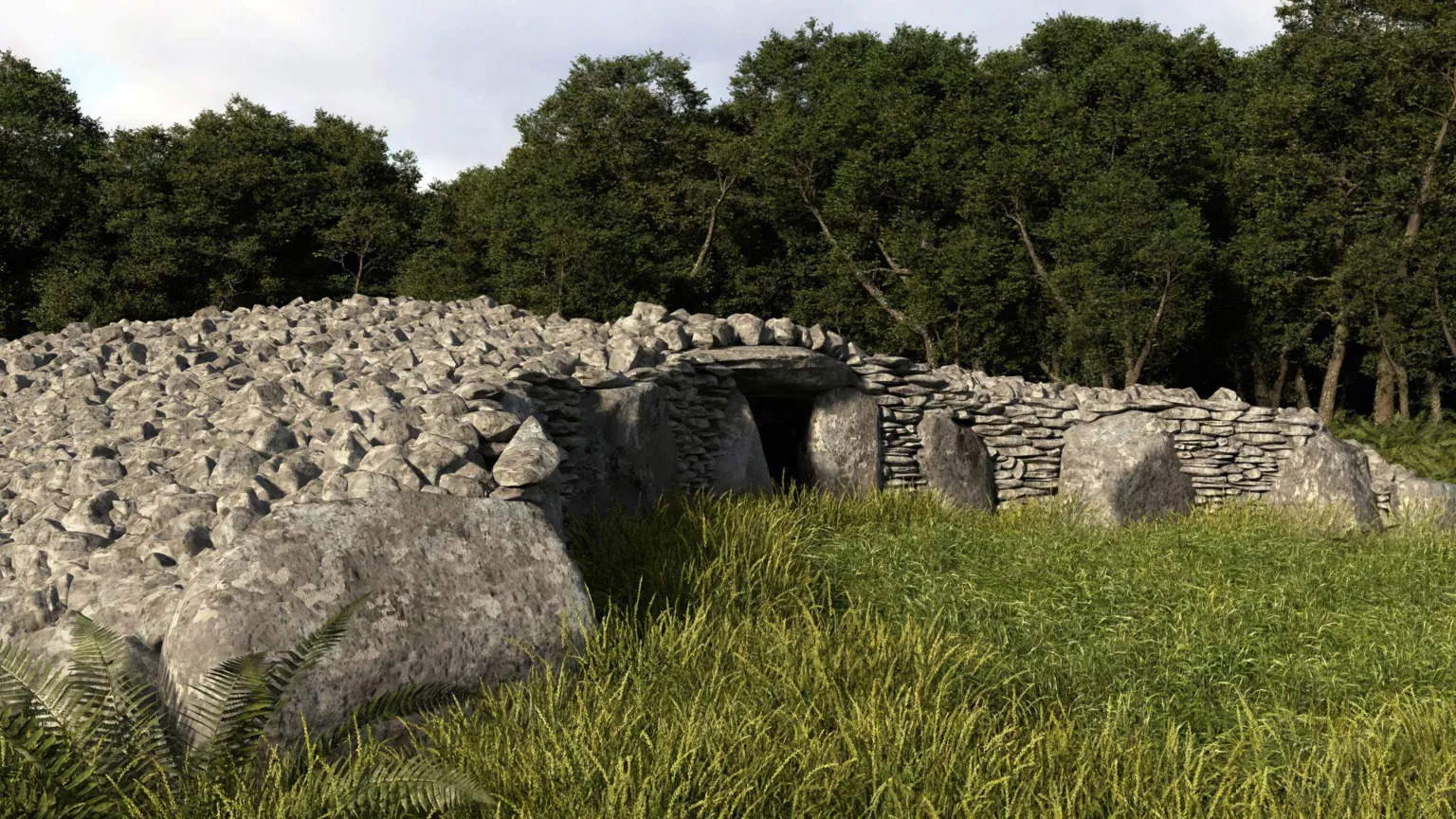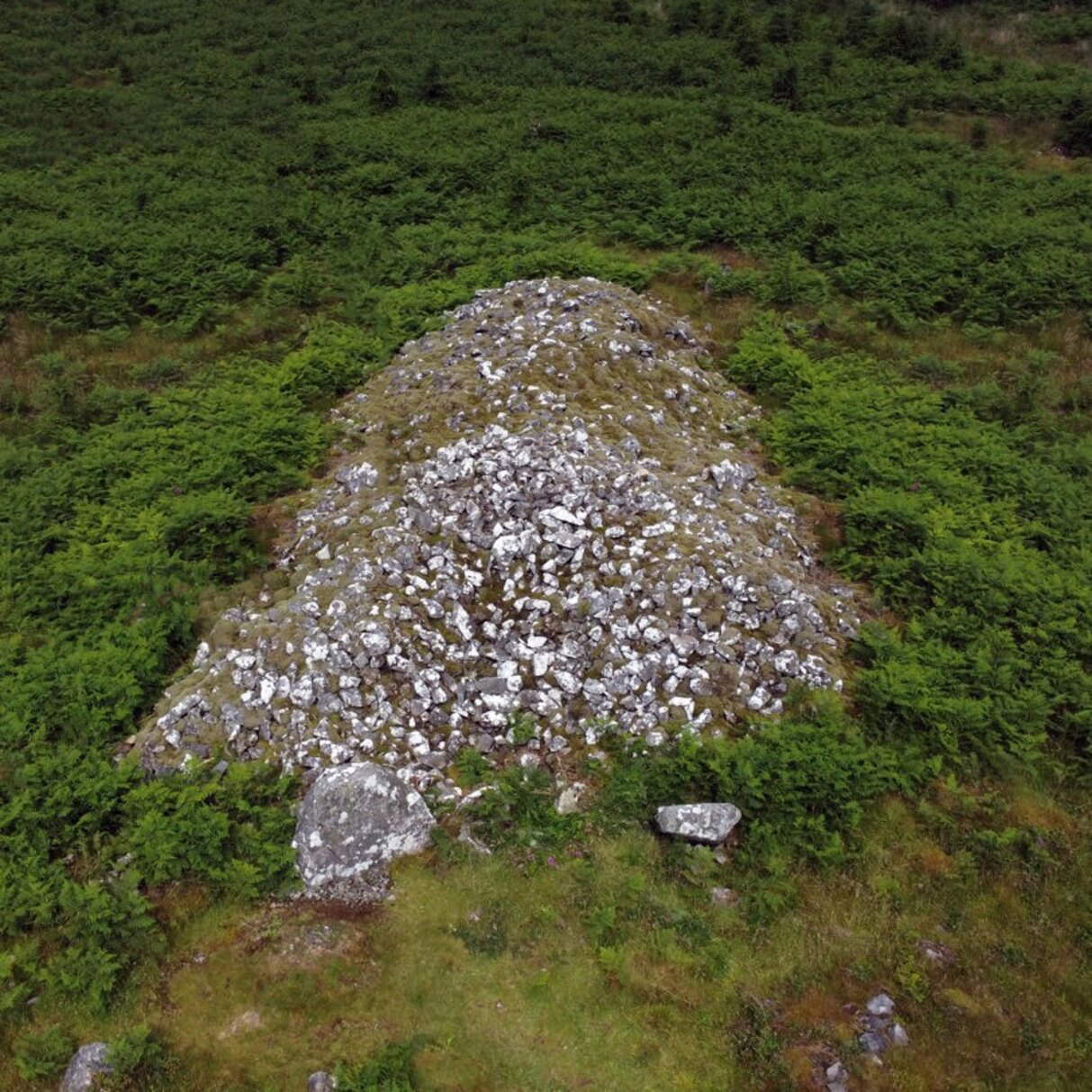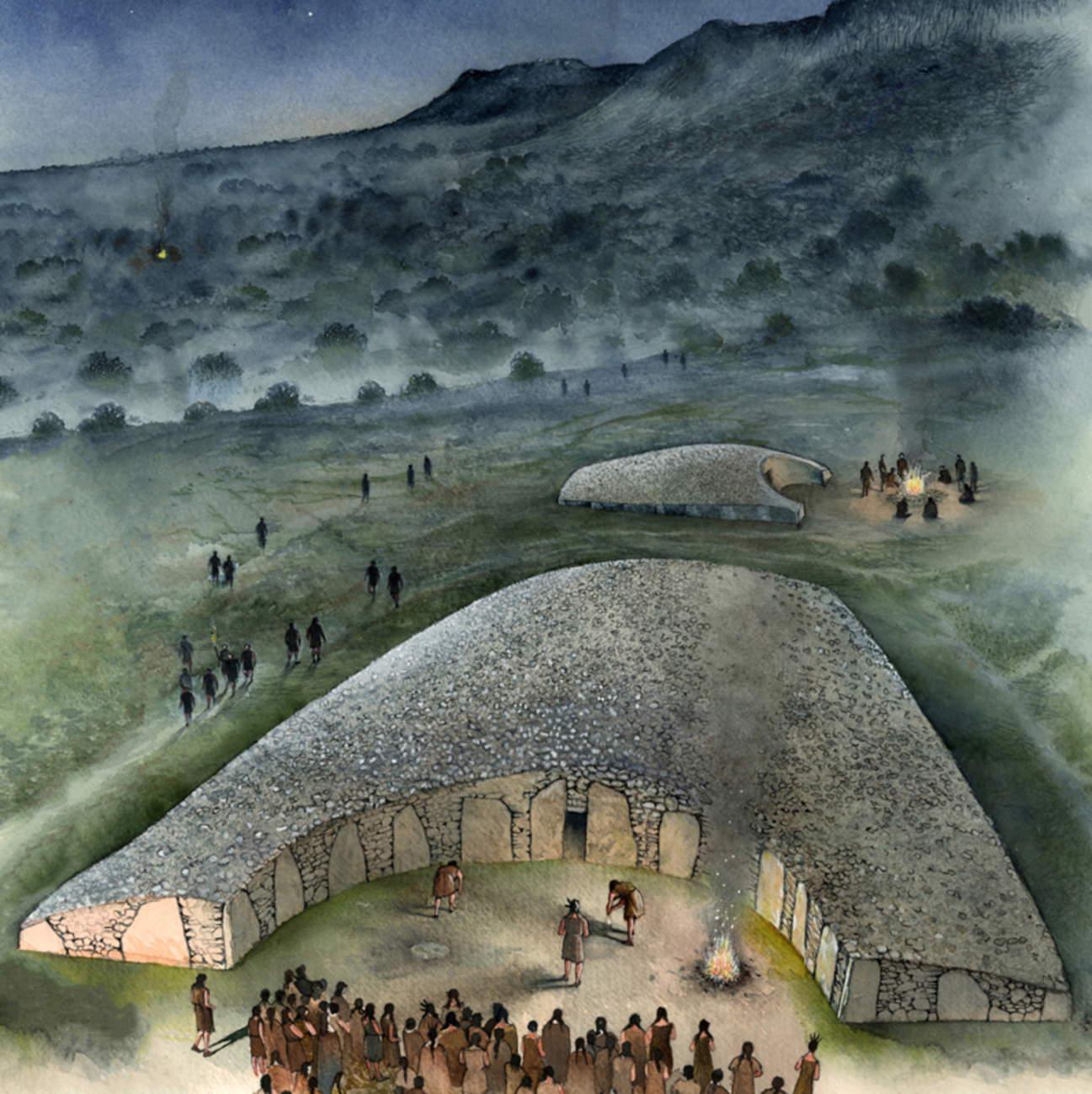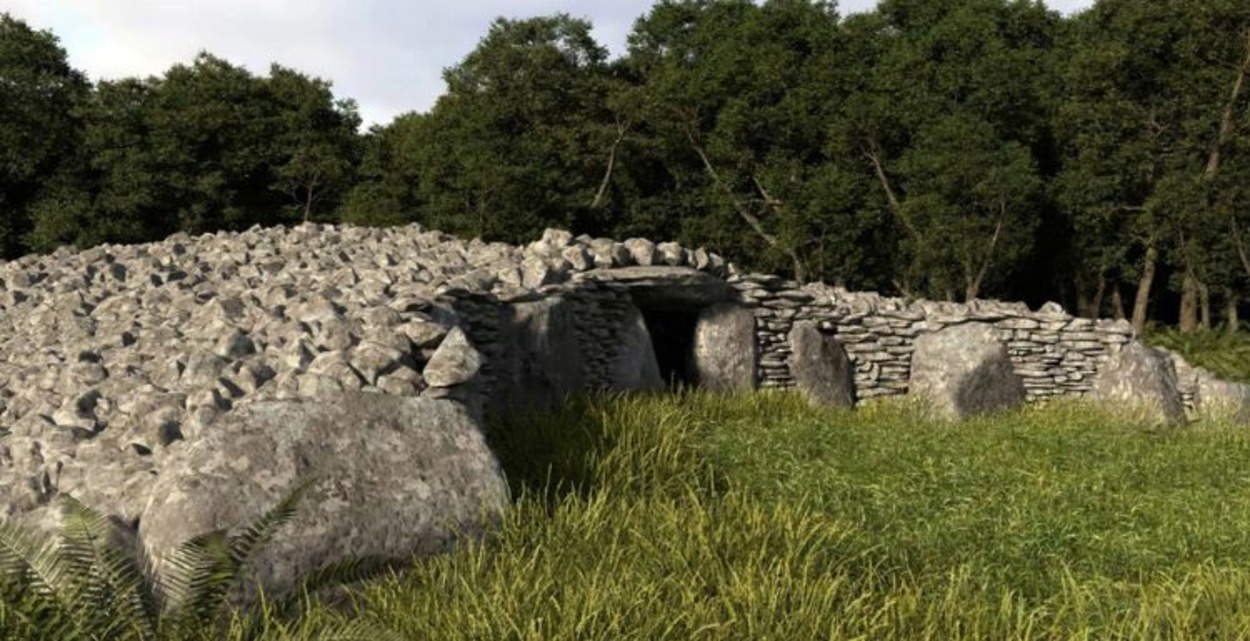An inconspicuous pile of stones, when observed today, is what remains of the Boreland chambered cairn, within Knockman Wood in the Galloway area of southwest Scotland. Yet some six thousand years ago, this place represented a landmark for Neolithic communities in the Atlantic area. Those same communities who, around 4000 B.C., settled Scotland and Northern Ireland, bringing with them new agricultural practices and complex rituals, and building large stone monuments known as Clyde cairns, chambered cairns. Today, thanks to a new digital visualization initiative, the Boreland site can be explored in a form that is closer to its original appearance. A panel installed in the area offers a QR code that links to an online video: the user is then guided through a three-dimensional reconstruction of the site, which allows the user to understand the architectural structure of the cairn and imagine its role in the society that built it(a reconstruction of the Boreland cairn in 3D can be viewed here).
The project is part of The Bare Bones educational resource, published in 2023, which aims to explore the material and intangible culture of Neolithic peoples in the Atlantic area. The booklet, accompanied by illustrations and explanatory text, uses a combination of modern technology and creative archaeological interpretation to offer new perspectives on megalithic monuments of the period. Laser scanning techniques, aerial drone shots and three-dimensional modeling were used to produce it. In charge of the reconstruction of the Boreland cairn was archaeologist Marcus Abbott, who conducted an in-depth analysis of the site. The first step involved collecting hundreds of aerial photographs taken with the aid of a drone. The resulting material was then processed to build a detailed 3-D model of the cairn, allowing its original configuration to be hypothesized and its story to be told more effectively. The goal of the project is twofold: on the one hand, to return a more comprehensible image of structures that now appear eroded by time; on the other, to stimulate reflection on the way such monuments were experienced by prehistoric communities.

The name chambered cairn refers to a widespread Neolithic burial typology consisting of stone mounds within which burial chambers were carved. In southwestern Scotland these structures take the name Clyde cairns, while in Northern Ireland they are known as court tombs because of the presence of a ceremonial area anterior to the chamber proper. The Boreland cairn thus fits into this architectural and ritual tradition, representing one of several examples scattered along the Atlantic coasts of the British Isles.
Archaeological research, however, can only offer a partial view of the past. Bare bones, as the publication The Bare Bones defines them , are what remains of a complex cultural system of symbols, emotions and rituals of which traces have been lost. Precisely for this reason, initiatives such as Boreland’s digital reconstruction seek to bridge, at least in part, the gap between the materiality of the finds and the human experience that was associated with them. It is not possible to know with certainty what kind of ceremonies took place around these monuments, but hypotheses remain open: were they family events, restricted to a few participants, or large community gatherings? Were the ceremonies accompanied by dancing, singing, and drumming, or by slow, silent processions lit by flashlights and marked by symbolic gestures? Funeral practices, in every age, are closely linked to the worldview of the societies performing them. The construction of cairns such as the one at Boreland required considerable collective effort, reflecting the central role that memory of the dead and ancestor worship held for these communities. The arrangement of the stones, the orientation of the entrance, and the layout of the chamber and surrounding spaces suggest an organization of the sacred rooted in the land and natural cycles.
In the broader context of archaeological research in Scotland and Ireland, projects such as The Bare Bones fit into a line of work aimed at enhancing prehistoric sites through accessible and engaging languages. The goal is to promote knowledge of cultural heritage without sacrificing scientific accuracy, while opening up new educational possibilities.


“The architecture of these chambered fleshes suggests their use both as a tomb for the dead, where people placed the deceased in chambers within the cairn, and as a space for the living, where people could pay their respects within the forecourt,” explains archaeologist Matt Ritchie. “Thinking about how early Neolithic people experienced life and death can help us better appreciate our experience of space, place and community. For while they may be far removed in time from our ancestors, their lands are our lands and we are not far from place. The chambered cairns of the North Channel remain an important connection between people and place across the millennia-markers of place, then and now. Of those who survive, some remain clothed, their secrets hidden beneath huge piles of stone, as at Boreland in Galloway. Some endure the ravages of time, their features masked by rubble and collapse. Some have been disturbed by treasure hunters, their chambers opened and exposed. Some have been robbed of stones by their cover caskets and survive only as skeletal outlines. And some have been reconstructed as ruins and presented to the public. However, many others have been lost to time, with only a handful recorded as ghostly plans in the pages of ancient diaries or ghostly sketches in the notebooks of their excavators.”
 |
| New 3D visualization brings ancient Neolithic cairn at Boreland in Scotland to life |
Warning: the translation into English of the original Italian article was created using automatic tools. We undertake to review all articles, but we do not guarantee the total absence of inaccuracies in the translation due to the program. You can find the original by clicking on the ITA button. If you find any mistake,please contact us.